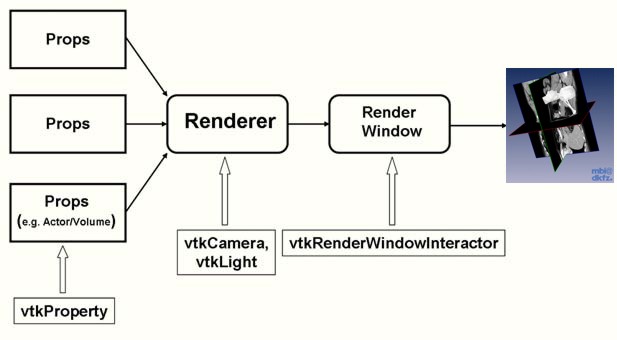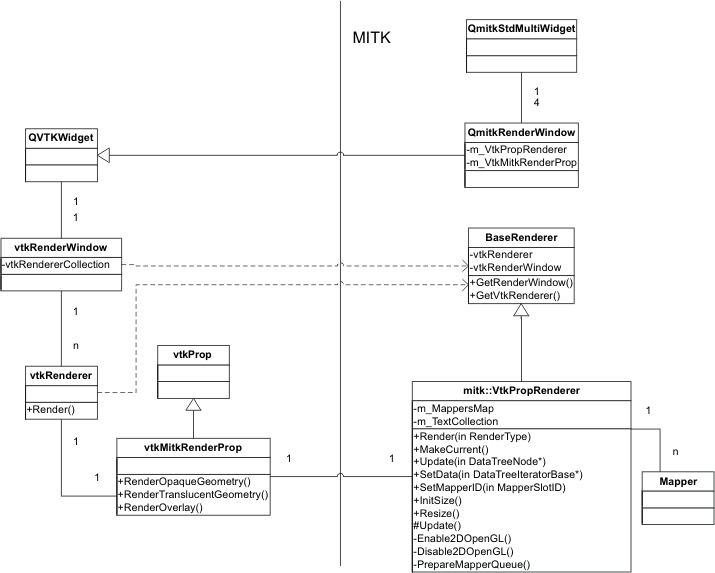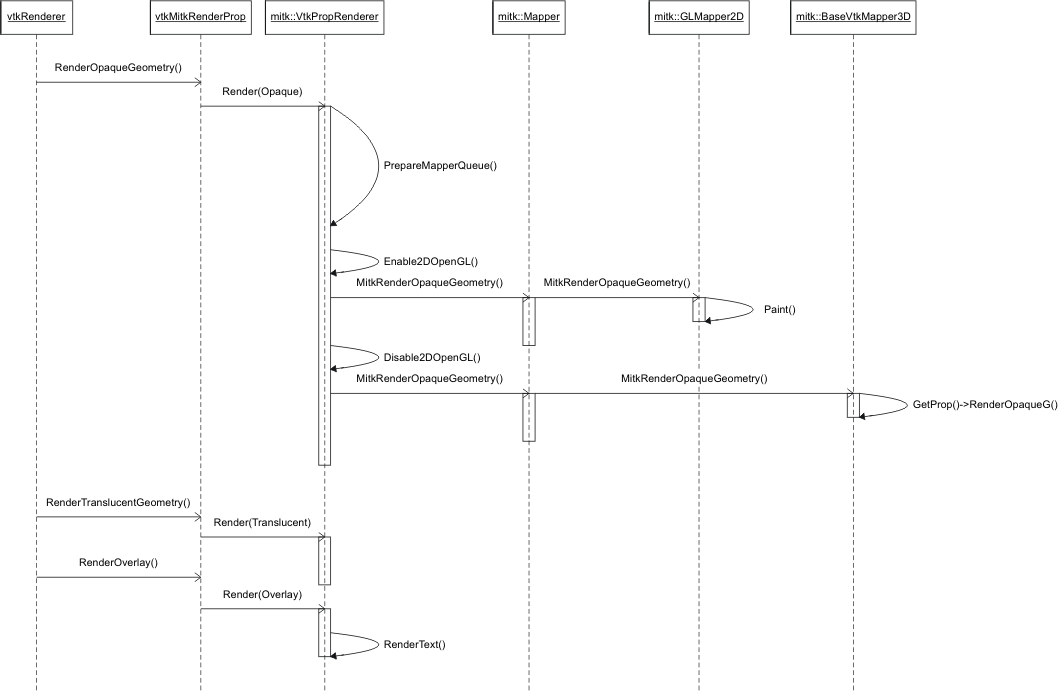This page describes the MITK rendering mechanism switching to the QTVTK widget. MITK releases with version > 0.8 use this new rendering pipeline. Several changes in contrast to the established old rendering pipeline are explained in the following.

Rendering in VTK
More information about the VTK rendering pipeline can be found at http://www.vtk.org and in the several VTK books.
In contrast to the former MITK rendering pipeline, the new process is tightly connected to VTK, which makes it straight forward and simple. In consequence, several MITK classes have been dropped out:
Instead, we use the above mentioned "vtkMitkRenderProp" in conjunction with a new mitk::VtkPropRenderer for integration into the VTK pipeline. Also, the QmitkRenderWindow does not inherit from mitk::RenderWindow, but from the QVTKWidget, which is provided by VTK.
The main classes of the MITK rendering process can be illustrated like this:

Rendering in MITK
A render request to the vtkRenderWindow does not only update the VTK pipeline, but also the MITK pipeline. However, the mitk::RenderingManager still coordinates the rendering update behaviour. Update requests should be sent to the RenderingManager, which then, if needed, will request an update of the overall vtkRenderWindow. The vtkRenderWindow then starts to call the Render() function of all vtkRenderers, which are associated to the vtkRenderWindow. Currently, MITK uses specific vtkRenderers (outside the standard MITK rendering pipeline) for purposes, like displaying a gradient background (mitk::GradientBackground), displaying video sources (QmitkVideoBackround and mitk::VideoSource), or displaying a (department) logo (mitk::ManufacturerLogo), etc. Despite these specific renderers, a kind of "SceneRenderer" is member of each QmitkRenderWindow. This vtkRenderer is associated with the custom vtkMitkRenderProp and is responsible for the MITK rendering.
A sequence diagramm, which illustrates the actions after calling the Render() function of the MITK-Scene vtkRenderer is shown below:

Sequence overview MITK scene rendering
It is sometimes desired to have one (or more) QmitkRenderWindows that are managed totally independent of the 'usual' renderwindows defined by the QmitkStdMultiWidget. This may include the data that is rendered as well as possible interactions. In order to achieve this, a set of objects is needed:
The actual setup, respectively the connection, of these classes is rather simple:
// create a new instance of mitk::RenderingManager mitk::RenderingManager::Pointer renderingManager = mitk::RenderingManager::New(); // create new instances of DataStorage and GlobalInteraction mitk::DataStorage::Pointer dataStorage = mitk::DataStorage::New(); mitk::GlobalInteraction::Pointer globalInteraction = mitk::GlobalInteraction::New(); // add both to the RenderingManager renderingManager->SetDataStorage( dataStorage ); renderingManager->SetGlobalInteraction( globalInteraction ); // now create a new QmitkRenderWindow with this renderingManager as parameter QmitkRenderWindow* renderWindow = new QmitkRenderWindow( parent, "name", renderer, renderingManager );
That is basically all you need to setup your own rendering pipeline. Obviously you have to add all data you want to render to your new DataStorage. If you want to interact with this renderwindow, you will also have to add additional Interactors/Listeners.
Note:
 1.7.2
1.7.2